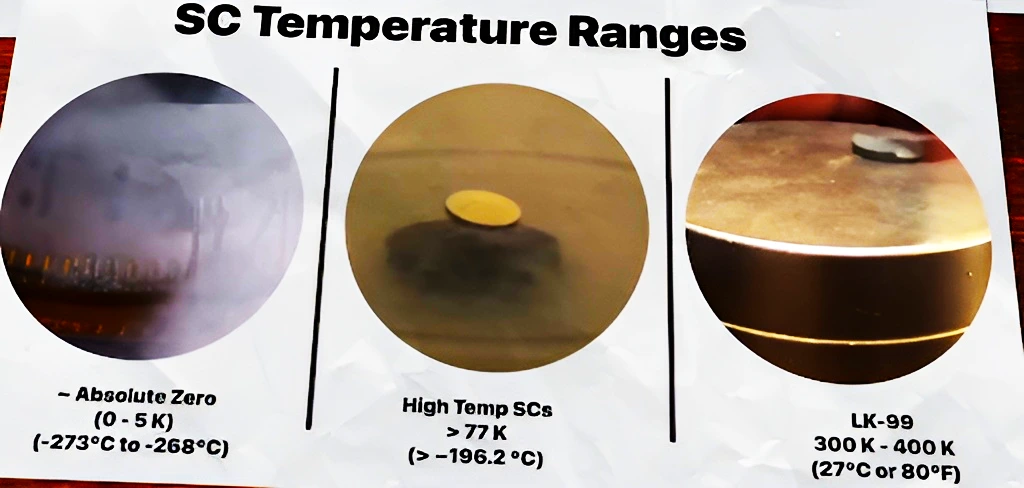Context:
Researchers from China and Japan have identified indications of superconductivity in the contentious material LK-99.
Meissner Effect in LK-99: A Breakthrough in Superconductivity
- The researchers identified a near-RTP superconductivity indication LK-99.
- The researchers witnessed the manifestation of the Meissner effect in LK-99.
- The new group used an advanced synthesis method for LK-99 samples and conducted additional tests for different superconductivity indicators.
- They performed hysteresis experiments by applying and removing a magnetic field to observe how the material responds at different temperatures, utilizing direct current measurements.
About Meissner Effect
- When a material shifts from a normal to a superconducting state, it actively repels magnetic fields from its interior.
- This phenomenon is known as the Meissner effect.
Direct Current (DC) measurement
- Direct current (DC) measurements involve altering the material’s physical conditions to induce a transition to a superconducting state.
|
What Is LK-99?
- Definition: It is as a superconductor under the conditions of room temperature and standard atmospheric pressure.
- LK-99 comprises powdered lead, oxygen, sulfur, and phosphorus compounds.
- Subjected to high temperatures, it transforms into a dark grey solid.
- Korean scientists have suggested its potential as a room temperature and pressure (RTP) superconductor.

LK-99 Characteristics
- Apatite Structure: Created using copper-substituted lead apatite, a phosphate mineral with unique tetrahedral motifs.
- Superconducting Behavior: LK-99 displayed essential superconducting traits, including minimal resistance to current flow and the emergence of resistance beyond a critical current threshold.
- Magnetic Resilience: Maintained superconductivity in a magnetic field until reaching a critical threshold.
|
What Is Superconductivity?
- It is the property of certain materials to conduct direct current (DC) electricity without energy loss when they are cooled below a critical temperature (referred to as Tc).
- These materials also expel magnetic fields as they transition to the superconducting state.
What Are Superconductors?

- Superconductors are substances that, when cooled to extremely low temperatures, display a complete absence of electrical resistance.
- It enables the transmission of electricity without any energy loss.
- Note: Two common low-temperature superconductors: lead and mercury.
Types of Superconductors
Two types of superconductors, determined in part by their response to a magnetic field.
- Type I superconductors lose their superconducting state entirely when exposed to a strong magnetic field, allowing field penetration into the material.
- Type II superconductors gradually reduce superconductivity as the magnetic field strength increases, completely vanishing at a higher threshold.
Study Challenges and Constraints
- The study faced limitations due to the small size of the superconducting portions in the material, resulting in a reduced critical magnetic field strength.
- Molecular structure analysis using X-rays was impeded by the interference caused by cuprous sulphide.
News source: The Hindu
![]() 11 Jan 2024
11 Jan 2024


